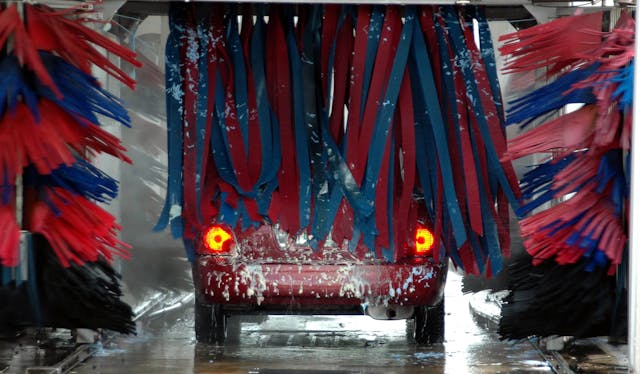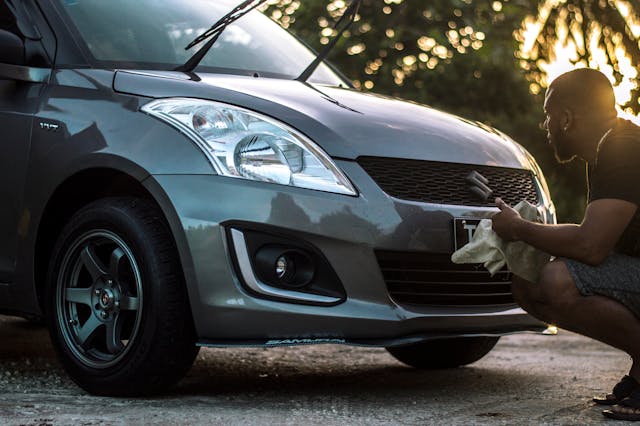Exterior Maintenance: Washing, Waxing, and Protecting Your Car's Paint Finish
Maintaining the exterior of your car is not just about keeping it looking good—it's also about preserving its value and protecting it from the elements. A well-maintained car exterior, particularly the paint finish, can help ensure that your vehicle stays looking new for longer. Regular washing, waxing, and protecting your car’s paint are essential steps in achieving that. In this article, we’ll explore the best practices for washing, waxing, and protecting your car’s paint to keep it looking shiny, fresh, and in top condition.

Proper Car Washing Techniques
Washing your car might seem like a straightforward task, but doing it correctly is key to maintaining a great paint finish. The primary goal when washing your car is to remove dirt, grime, and contaminants without causing scratches or swirl marks.
Step-by-Step Car Washing Guide:
-
Use the Right Tools: Invest in a high-quality microfiber wash mitt, soft sponges, and a bucket. Avoid using old towels or sponges that can leave scratches. A grit guard placed at the bottom of your bucket helps separate dirt from the soap solution.
-
Rinse Before You Wash: Start by rinsing the car with water to loosen any loose dirt and debris. This prevents abrasive particles from scratching the surface when you begin scrubbing.
-
Two-Bucket Method: For a thorough clean, use the two-bucket method: one bucket for soapy water and another for rinsing your mitt. This minimizes the chance of dirt contaminating the water and causing scratches.
-
Work From Top to Bottom: Always start washing from the top of the vehicle and work your way down. This ensures that dirt doesn’t fall on the areas you’ve already cleaned.
-
Dry With Microfiber Towels: Once washed, dry the car with a clean microfiber towel or drying cloth. This helps avoid water spots and prevents the dirt from re-attaching.
Washing your car regularly helps keep contaminants like bird droppings, tree sap, and road salt from damaging the paint finish over time.
Waxing Your Car's Paint
Waxing is a crucial step to maintaining your car's paint, as it adds a protective layer that shields the surface from the elements. It not only enhances the shine but also provides a barrier against harmful UV rays, water, and dirt.
Why Wax Your Car?
-
Protection: Car wax helps protect your paint from oxidation, fading, and contamination. UV rays can break down the clear coat, making the paint look dull and aged. Wax helps prevent this by creating a protective layer.
-
Shiny Finish: Wax adds a brilliant, glossy finish to your car's exterior, enhancing its appearance.
-
Water Beading: Waxed surfaces repel water, which causes water to bead and roll off the surface, minimizing the risk of water spots and keeping your car cleaner for longer.
How to Apply Wax:
-
Choose the Right Wax: There are two main types of car wax—paste wax and liquid wax. Both provide excellent protection, but paste wax tends to last longer, while liquid wax is easier to apply.
-
Clean and Dry the Car: Ensure the car is completely clean and dry before applying wax. Dust and moisture can interfere with the waxing process.
-
Apply Wax in Small Sections: Use a soft, clean applicator pad to apply wax in small circular motions. Work one section at a time, and don’t apply the wax too thickly—thin, even layers work best.
-
Buff Off Excess Wax: Allow the wax to dry to a haze, and then buff it off using a clean microfiber towel. Buffing in small circles will help achieve that perfect shine without leaving streaks or wax residue.
For optimal results, it’s recommended to wax your car every 3-6 months, depending on the climate and how often the car is exposed to the elements.
Paint Protection: Sealants and Ceramic Coatings
While waxing provides excellent protection, modern paint protection products like sealants and ceramic coatings offer more long-lasting and durable results. These products form a stronger bond with the paint and are designed to protect the car for months or even years.
Paint Sealants:
-
What It Is: Paint sealants are synthetic products that offer longer-lasting protection than wax. They create a hydrophobic layer that repels water and dirt while enhancing the depth of the paint’s shine.
-
How to Apply: Apply a paint sealant in the same manner as wax—clean, dry the car, and apply in small sections. Once applied, it should be buffed off with a microfiber cloth.
-
Benefits: Sealants typically last longer than wax, often protecting the paint for 6-12 months. They’re also more resistant to contaminants like bird droppings and tree sap.

Ceramic Coatings:
-
What It Is: Ceramic coatings are advanced liquid polymers that bond with the paint surface at a molecular level, creating a strong protective layer. These coatings offer superior protection against dirt, water, UV rays, and chemicals.
-
How to Apply: Ceramic coatings require careful application and are generally a more involved process than waxing or sealing. It often requires multiple layers to ensure complete coverage, and the vehicle should be polished beforehand to ensure the best bond.
-
Benefits: Ceramic coatings can last up to two years or more, offering a long-term solution to paint protection. The coating makes the paint incredibly hydrophobic, making it easier to clean, and it provides a deep, glossy finish.
Ceramic coatings are often the choice for enthusiasts who want the highest level of protection, though they come at a higher price point than traditional waxing or sealant.
Additional Tips for Maintaining Your Car's Exterior
-
Protect from Environmental Damage: Try to park your car in a garage or under a cover whenever possible to shield it from harsh sun, bird droppings, tree sap, and harsh weather conditions.
-
Rinse After Exposure to Salt: If you live in an area that uses road salt during winter, it’s important to rinse off your car regularly to prevent salt buildup, which can lead to rust over time.
-
Use a Clay Bar: Occasionally using a clay bar to remove embedded contaminants like tree sap and industrial fallout can restore the smoothness of your paint finish. This is particularly useful for older cars that may have developed stubborn marks.
-
Check for Scratches: Regularly inspect your vehicle for any signs of scratches, dings, or chips in the paint. Addressing these issues quickly can prevent further damage and rust formation.
Conclusion: Protecting Your Car's Paint Finish
Maintaining your car's paint finish is a vital part of its long-term care and aesthetic appeal. By following a regular routine of washing, waxing, and using protective sealants or coatings, you can ensure that your car stays looking as good as new. Not only will it improve your vehicle’s appearance, but it will also protect the paint from the harsh elements, preserving its value for years to come. Regular exterior maintenance is one of the simplest yet most effective ways to care for your car.












